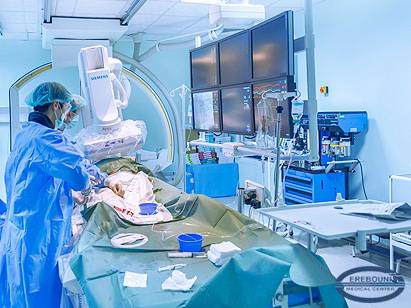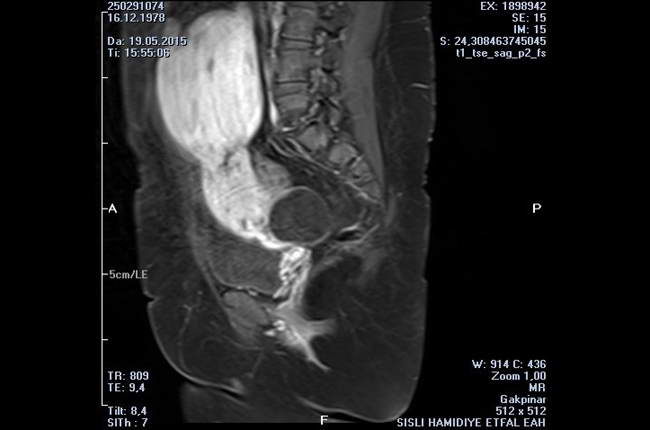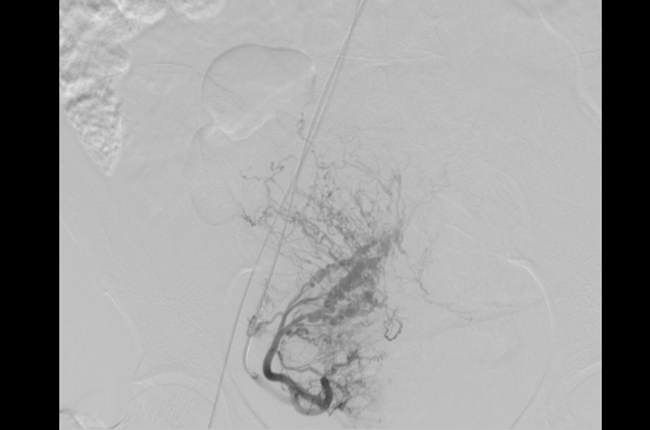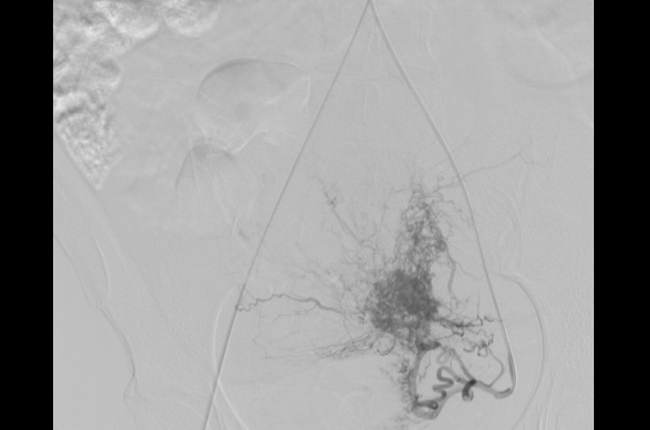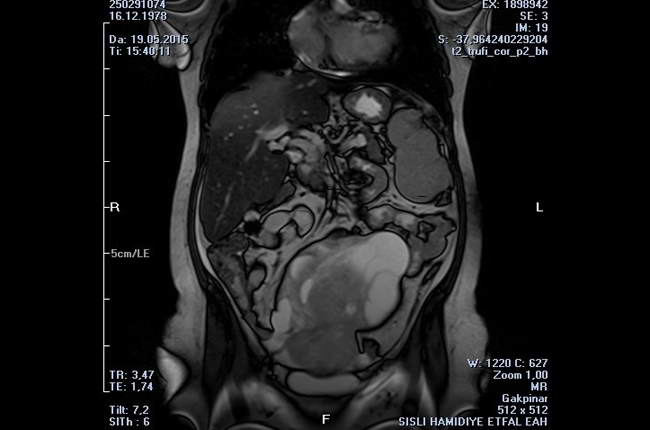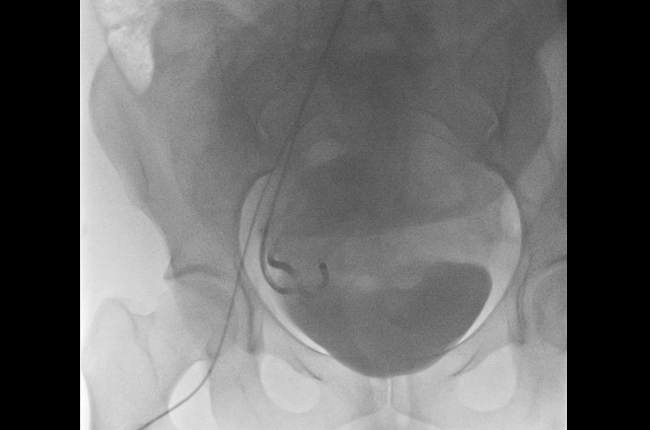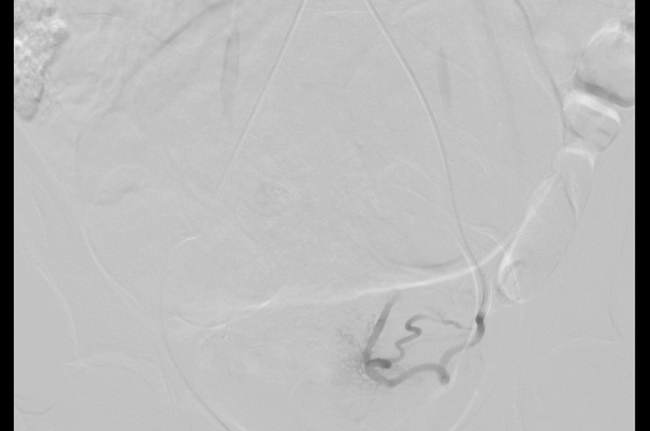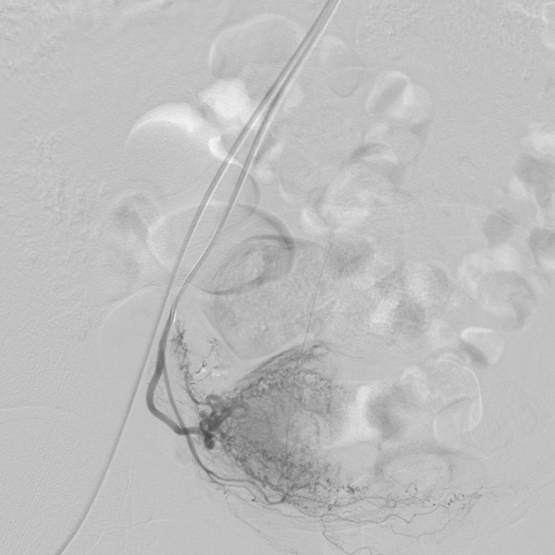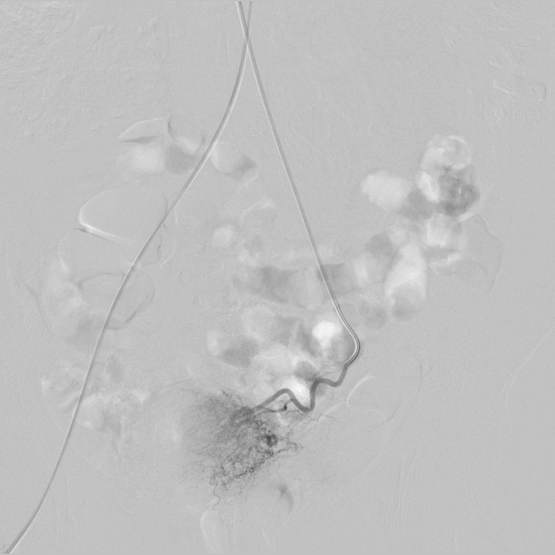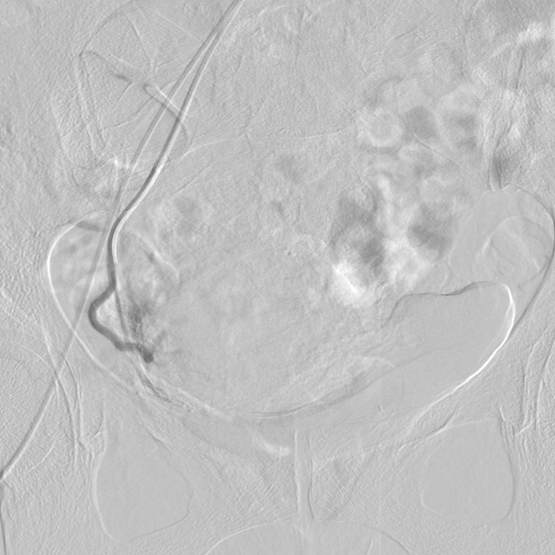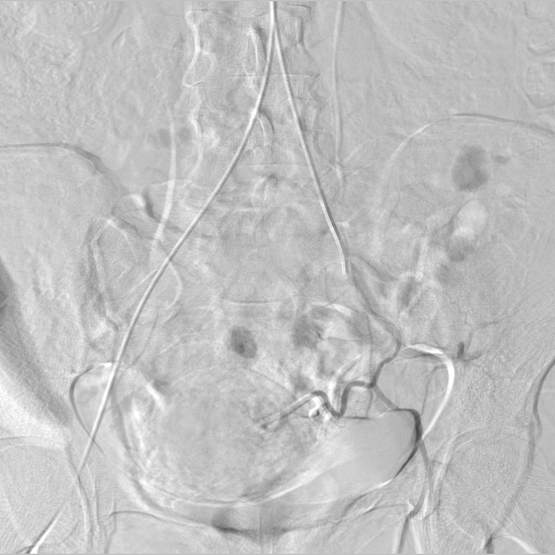The surgery is performed in specialized X-Ray operating room, equipped with angiography machine. The embolisation is performed by endovascular surgeons rather than by gynecolologists. Due to the fact that the method of UAE requires the qualification in the field of vascular surgery and radiology, it is not performed by gynecologist.
Embolisation is a painless procedure, which is carried out under local anesthesia. The only intervention is the puncture of the right common femoral artery. For that reason after pre-operative local anesthesia the thin catheter (1,2mm) with novocaine and lidocaine solutions is introduced into the artery through a small skin access (1,5 mm) in the upper hip area, which is under x-ray fluoroscopy guidance implaced directly into the uterine arteries .
The essence of UAE is a cessation of a blood flow through the branches of the uterine arteries. Yet the branches supplying blood to a healthy area of myometrium do not suffer. It is possible due to the specificities of blood flow in the myoma - blood supplying of the nodules is carried out from the so-called prei-fibroidal plexus that is vasculature, that surrounding myoma at periphery. These vessels have a diameter up to 0,5 mm, i.e. several times more, than arteries of normal myometrium. After the insertion into these vessels special embolised particles, myoma loses blood supply, and is replaced with connective tissue – fibrosis, which leads to the significant reduction or disappearance of the myoma and its manifestations. During UAE myomatosis nodules aren`t removed. The embolised particles block the vessels and the myoma shrinks.
At the end of 2015 at MC Erebouni were performed 2 another surgeries on uterine arteries embolisation. Patient E.M., 1978b/y was admitted to MC Erebouni in 05.11.15 with complaints of: heaviness in the region of small pelvis pressure in internal organs, abdominal distension and urinary incontinence. The patient was diagnosed hysteromyoma (for that she was receiving drug treatment).The myoma in its sizes corresponded to 20-22 weeks of pregnancy. Concomitant diseases were: antiphospholipid syndrome and systemic lupus erythematosus.
Considering all above mentioned, the patient was contraindicated open surgical treatment, and after carrying out clinical and laboratory investigations in 05.11.15, was performed surgery by interventional cardiologist of Angiography Service Dr. Arsen Tzaturyan: uterine artery embolisation with embospheres in diameter of 700-900 mcm. Embosphere consists of microspheres of different sizes from biocompatible polymer, which is intended for embolisation.
Postoperative period went smoothly, the patient had post-embolisation syndrome (pain, nausea, vomiting), which was relieved with the help of drugs. The patient was discharged on the 4th day. Within a month after surgical interventions there weren`t registered any complaints that had been observed in pre-operative period. The dynamic observation was recommended.
The second patient A.E.,1968y/b, was admitted in 04.12.15. with complaints of: uterine bleeding, which has been observed for several years. The patient was diagnosed submucous hysteromyoma and also concomitant diseases were: rheumatic heart disease, the condition after prosthesis of aortic, mitral and tricuspid valve, high degree restenosis of aortal valve, previous stroke.
The patient regularly took varfarin because of prosthetics of the heart valve. The above mentioned pathologies of the patient represented high risk for the open surgical interventions.
As in the first case, the surgery was performed by interventional cardiologist of Department of Angiography and intervention Cardiology Dr. Arsen Tzaturyan: uterine artery embolisation with embospheres. For the second patient were used embospheres with diameter of 500-700mcm., because the myoma was of small sizes. The second patient wasn`t observed post-embolisation syndrome, and post-operative period went smoothly, uterine bleeding has stopped. The patient was discharged on the 4th day. The first manifestation of the effectiveness of UAE is the normalization of the symptoms. Directly after intervention menstrual bleeding is normalized, reduces its volume and duration. The symptoms of impaction are also reduced and disappeared; this process is a bit longer and can last for a few weeks and months. The reduction in myomatosis nodules, and also the common sizes of the uterus are lasting during the first 6-8 months after UAE. On average by the year the volume of the nodules reduces more than 4 times. Small myomas are completely disappearing. The important feature of UAE is a lack of the risk of disease relapse after interventional interference. This results from the fact that at UAE it impacts on all nodules, regardless of the size. At present there are positive data of observation in a large number of the patients in the long term-more than 98% of women after UAE do not need any additional treatment regarding hysteromyoma.

